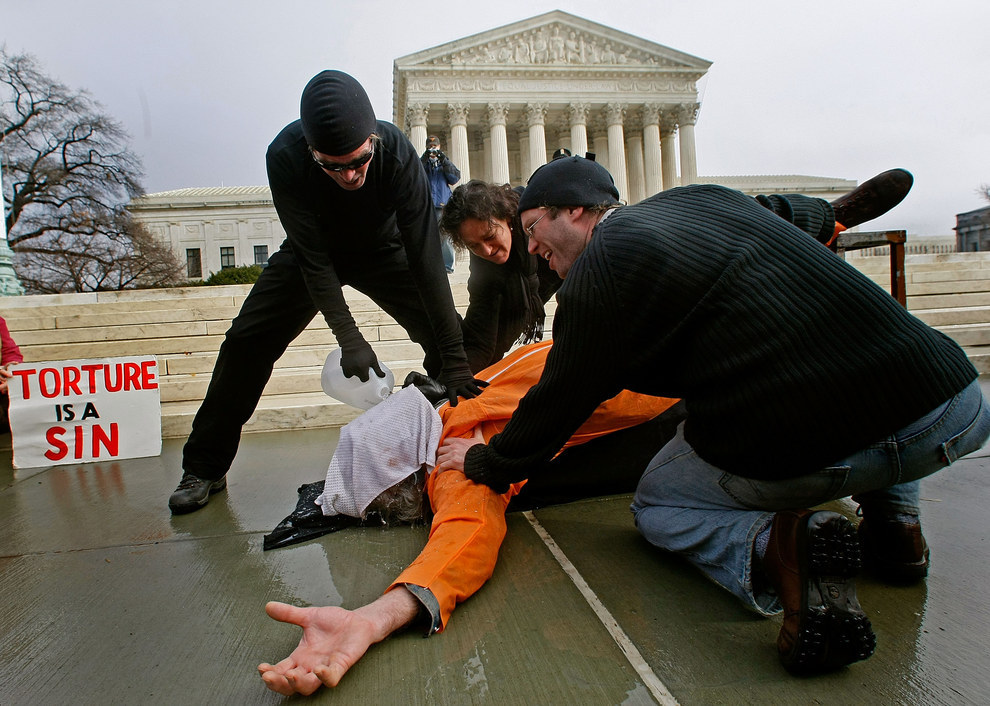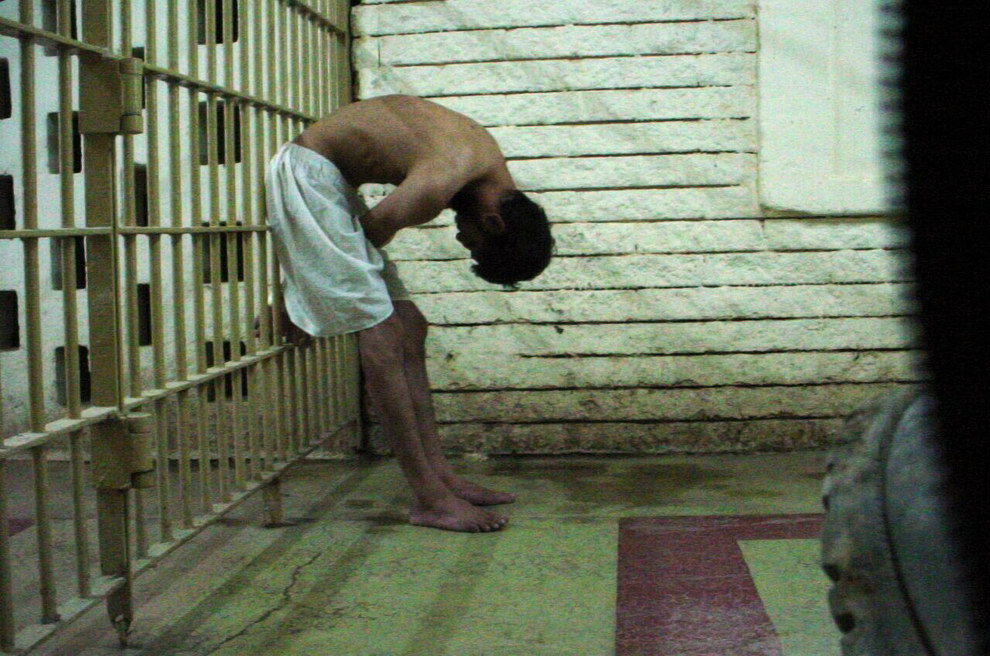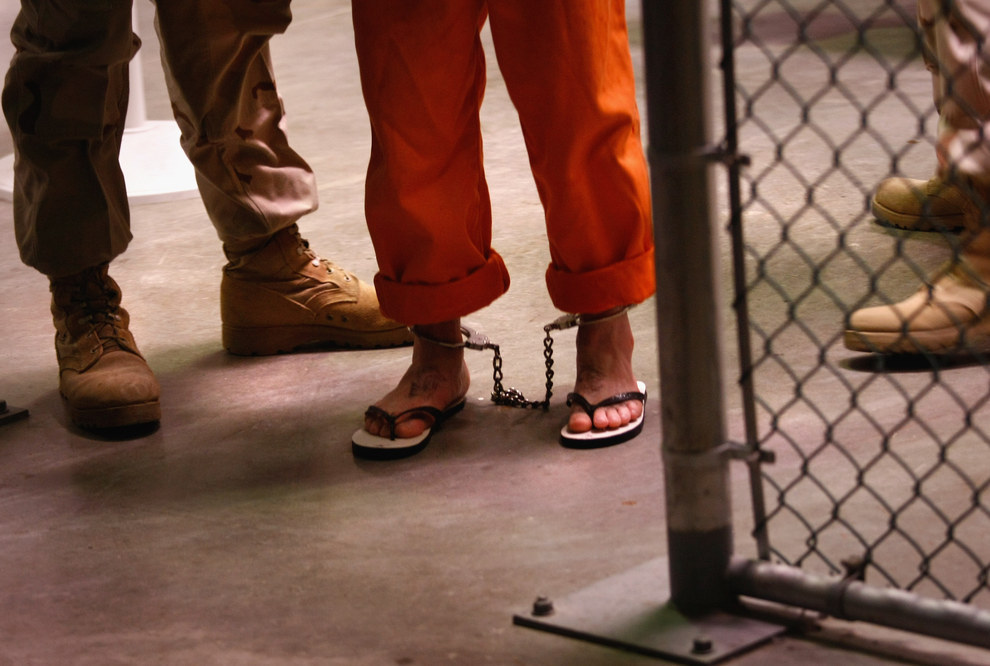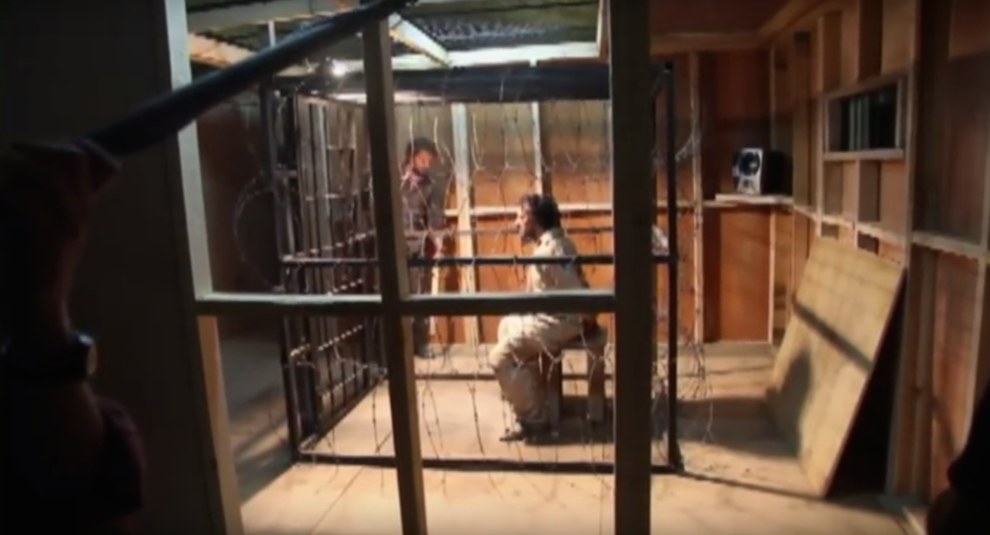Here’s What Actually Gets Terrorists to Tell the Truth — And It’s Not Torture
IN FOCUS, 24 Aug 2015
Peter Aldhous, BuzzFeed News – TRANSCEND Media Service
Over the past five years, psychological research — some involving real terrorist suspects — has shown how to get information from people who don’t want to talk. Now Washington has the chance to put these findings into practice.
17 Aug 2015 – Hollywood has a lot to answer for. Thanks to the hit TV show 24 and movies like Zero Dark Thirty, we think we know what terrorist interrogations look like: After being roughed up and threatened, the suspect breaks down and reveals all. Mass murder is thwarted. Osama Bin Laden is shot.
The end, we tell ourselves, justifies the ugly means.
Even after the abuses committed at CIA “black sites” were laid bare last year by the U.S. Senate Intelligence Committee, most Americans stuck to this view. Some 59% believed the CIA’s harsh interrogation methods were justified, in a December 2014 poll run for the Washington Post and ABC News.
Steven Kleinman knows better. In 2003, he was one of the U.S. Air Force’s top interrogators, sent to Iraq to oversee the questioning of suspected insurgents. After arriving in Baghdad, he walked into a darkened room to find a handcuffed detainee kneeling before a seated military interrogator. The suspect was slapped across the face every time he answered a question — whatever he had to say. Kleinman was told that it had being going on for half an hour.
Then a lieutenant colonel, Kleinman pulled rank and halted the interrogation. But what he had witnessed was by then standard practice. “Later I saw people being stripped nude and forced to stand for a long period of time,” Kleinman told BuzzFeed News.
Kleinman was appalled not only because what he saw breached human rights, but also because his long experience in interrogation told him that it just wouldn’t work. “It’s not even close to a consistent means of getting reliable information,” Kleinman said.
At the time, it was easy to dismiss the anecdotal experience of interrogators who opposed these abusive methods. “We didn’t have the science,” Mark Fallon, formerly a Naval Criminal Investigative Service special agent, told BuzzFeed News.
When Fallon arrived at Guantánamo Bay in 2002, leading the effort to bring terrorist detainees before military courts, he had more relevant experience than anyone else present. He had helped prosecute Sheik Omar Abdel-Rahman, who planned the 1993 World Trade Center bombing, and had led the investigation into al-Qaeda’s 2000 attack on the USS Cole.
Yet even Fallon was sidelined as inexperienced interrogators implemented the harsh tactics — including sleep deprivation, isolation, and painful stress positions — that had suddenly come to dominate the military’s approach.
Today, Kleinman and Fallon finally have science on their side. Over the past five years, a small group of researchers has pulled together a body of evidence about what works in getting people to give up their secrets. It has nothing to do with abuse and coercion. Instead, it borrows methods from psychotherapy to get suspects talking and uses the science of how our brains process information to separate truth from lies.

Activists in front of the U.S. Supreme Court in 2007. Mark Wilson / Getty Images / Via gettyimages.com
When the U.S. Congress returns from its summer recess in September, it can pass a law that makes this new science of interrogation the official playbook across the federal government.
The law offers an unprecedented opportunity to prevent the mistakes made after 9/11 from being repeated, Fallon said. “Had I had the type of research then that is available now, possibly I could have changed the course of history.”
U.S. interrogation methods took a fateful turn in 2002, when James Mitchell and John “Bruce” Jessen started working for the CIA.
The two psychologists had been involved with the U.S. Air Force’s branch of the military Survival, Evasion, Resistance and Escape (SERE) program, preparing pilots for what could happen if they were downed behind enemy lines. In SERE training, service personnel are put through the brutal interrogation methods used on U.S. prisoners in Korea and Vietnam, in order to teach them how to resist attempts to break them down.
Mitchell and Jessen turned this defensive program into an offensive one, euphemistically called “enhanced interrogation.” Terrorist suspects were waterboarded, confined in coffin-like boxes, exposed to extremes of hot and cold, slammed against walls, and forced to endure painful stress positions. At least one detainee died in the CIA’s custody, apparently of hypothermia.
At that time, the CIA had little experience with interrogations. But if they had consulted with experts, they would have been told that such brutal methods were unlikely to provide useful intelligence.
It’s true that torture can make people talk. But they will often say anything to make the suffering stop. During the Korean War, for instance, captured U.S. pilots admitted to atrocities that never happened, including dropping chemical weapons on civilian populations.
Recent research with SERE trainees also indicates that brutal treatment will make it difficult, if not impossible, for a detainee to recall the details an interrogator may be looking for. The stress of mock interrogation disrupts trainees’ ability to perform on standard tests of memory, according to studies done by Andy Morgan, a psychiatrist at the University of New Haven in Connecticut and a former intelligence officer with the CIA. Most become detached from reality, showing symptoms of mental “dissociation” — such as time seeming to slow down, or out-of-body experiences — that also happen during traumatic events like car accidents.
Expecting brutal interrogations to extract good intelligence is like “banging a hammer on a radio to get a better signal,” Morgan told BuzzFeed News. “It doesn’t enhance cognition. It only makes it worse.”
httpv://www.youtube.com/watch?v=u9bNpp8y89E
Human Rights First / YouTube / Via youtube.com
So much for what doesn’t work. But what does?
Getting good answers to that question has been a priority for the High-Value Detainee Interrogation Group (HIG), which brings together intelligence experts from the FBI, the CIA, the Pentagon, and the State Department. It was established by President Barack Obama in 2009 to set a new course for terrorist interrogations after the abuses committed in the early days of the “war on terror.”
The HIG has since interrogated high-profile suspects including Ahmed Abu Khatallah, indicted for the 2012 attack on the U.S diplomatic compound in Benghazi, Libya, and Dzhokhar Tsarnaev, one of the 2013 Boston Marathon bombers.
Since 2010, the HIG has also backed researchers working to transform the science of interrogation. The effort has been coordinated by Christian Meissner, a psychologist at Iowa State University in Ames, who empathically rejects what he calls the “anxiety model” of interrogation.
If you’re a fan of cop shows on American TV, you will have seen the anxiety model in action many times: Suspects are put under pressure to confess and watched for signs of stress that are supposed to reveal if they are lying. The abusive interrogation techniques developed by Mitchell and Jessen represent the anxiety model taken to horrific extremes.
Yet there’s little evidence that adversarial interrogations work — unless your goal is obtaining a high rate of false confessions. And the idea that liars reveal themselves when under high emotional stress stands on similarly shaky scientific ground. Polygraphs, which detect signs of arousal including heart rate and sweating, are notoriously unreliable.
Rather than focusing on stress, the new interrogation research program has concentrated on interviewing techniques that help people remember details about events — and make it harder for liars to keep their story together.
Central to this approach is the “cognitive interview,” developed by Ronald Fisher, a psychologist at Florida International University in Miami. Rather than being asked a series of questions, suspects may be told to close their eyes and recall what happened at a key meeting, or draw a sketch of the room in which it took place. They are encouraged to go over events repeatedly and offer details whether or not they seem important.
In one test, Fisher’s team asked seasoned instructors at the Federal Law Enforcement Training Center in Glynco, Georgia, to get their colleagues to recall the details of meetings held to plan field exercises. Those who used a cognitive interview, rather than the standard approach of asking direct questions, extracted 80% more information.
This approach can also separate liars from truth-tellers. When recalling their experiences in a cognitive interview, people who are telling the truth give longer and more detailed answers. Their recollections also tend to grow as more details come back into focus. Liars, on the other hand, typically tell a bare-bones story that doesn’t develop with retelling.
“Credibility is all in the words people use,” Meissner told BuzzFeed News. “It’s in the way they tell their story.” And crucially, it seems hard to game the system. Telling a lie is more mentally demanding than telling the truth, and hiding this cognitive effort is harder than concealing signs of stress.
Make a memory task tougher — by getting suspects to tell their story in reverse order, for example — and the differences become even more obvious.
In one study, Morgan simulated the investigation of a bioterrorist plot. He recruited biologists, who all visited a coffee shop in New Haven and were told remember what they saw. Some of them were also shown a picture of a “terrorist” and asked to phone him. They met him at the coffee shop and were given instructions and materials to grow cells in the lab.
All of the biologists were given cognitive interviews — including reverse order recall — by interrogators with more than 15 years of experience. Most of the biologists simply had to truthfully remember what they saw, but those who had participated in the plot had to do so while denying any knowledge of the terrorist or involvement in his activities.
By analyzing the total length of the biologists’ responses, and the number of unique words they used, Morgan found that he could separate the liars from the truth-tellers with 84% accuracy. This vastly outperformed the experts who conducted the interviews — whose judgments were little better than flipping a coin.
Other methods that help detect liars include strategically withholding key evidence until late in an interrogation. Put all your cards on the table to begin with, and it’s too easy for a suspect to adapt their story to fit the facts.

A detainee bent over with his hands on the bars of a prison cell at the Abu Ghraib prison in Baghdad in 2003. Associated Press / Via apimages.com
But to put these methods into practice, a suspect first has to start talking.
The belief that hardened terrorists will open up only if they are mentally broken lay behind Mitchell and Jessen’s abusive tactics. But research has instead confirmed that building rapport with a suspect is what brings results.
This finding comes from a unique resource: 181 videos of British law enforcement interviews with 49 suspects later convicted of terrorist offenses — including Irish paramilitaries, right-wing extremists, and al-Qaeda operatives and sympathizers.
Britain has its own dark history of abusive interrogations, which, together with flawed forensic science, led to prominent miscarriages of justice after bombings by the Irish Republican Army in the 1970s. In the most notorious case, the “Birmingham Six” were released in 1991 after spending almost 17 years in prison, falsely convicted of planting bombs that killed 21 people.
To guard against such abuses, British investigators must now obey strict interviewing rules that prohibit accusatory tactics and restrict them to gathering information. What’s more, all of their interviews must be recorded.
Laurence Alison, a psychologist at the University of Liverpool, convinced the British authorities to share videos of their terrorism interviews. His team scrutinized the videos, looking for the extent to which the investigators used methods known to build rapport. Some of these methods, including being nonjudgmental and empathetic, are commonly used by therapists. The methods also include allowing detainees some autonomy — which for suspected Islamic terrorists can mean letting them pray on their usual schedule and speak to an imam.
Alison found that interrogators who scored highest on his rapport-building scale got more information and minimized suspects’ use of counter-interrogation tactics like refusing to look at the interviewer, remaining silent, and changing the subject. Even a small amount of bad interpersonal behavior, such as hints of sarcasm, undermined attempts to get suspects to talk. “It really shuts people down,” Alison told BuzzFeed News.
Some of Alison’s findings may seem counterintuitive. “The more you reinforce their right to silence, the more likely they are to talk to you,” Alison said. He likens it to the tactics used by successful parents: “If you are good at dealing with your kids, and you have the interpersonal skills, they will be better behaved.”
Other important lessons have come from studying the methods of one of history’s most skilled interrogators. During World War II, Hanns-Joachim Scharff was employed by the German Luftwaffe to interview captured American pilots. Scharff rarely asked a question. Instead, he got captured pilots to say whether they already knew the “facts” he presented. Some of these statements were gaps he wanted filled, and Scharff gave no hint that the confirmation of these details was especially important. Pilots he interrogated often thought they’d told him nothing new, and they had few clues about what he was trying to find out.
Pär Anders Granhag of the University of Gothenburg in Sweden and his colleagues have broken down Scharff’s technique into a teachable framework and shown that it extracts more information than standard, question-based interrogations. In one study, volunteers were asked to read a narrative about an upcoming bomb attack by a left-wing extremist group on a shopping mall, and then faced an interrogation in which they pretended they were a source with this knowledge.
To help them play this role, the volunteers were told to imagine that they had strong social ties with the terrorists and could be denied free passage out of the country if they were uncooperative. Given these conflicting pressures, they were told to strike a balance between revealing too little and too much information.
Under these circumstances, the volunteers subjected to Scharff’s methods yielded more information, with greater precision, than those questioned in a conventional way. They also underestimated the amount of intelligence that they had provided.

A detainee is escorted by guards inside the U.S. military prison in Guanántamo Bay, Cuba, in 2009. John Moore / Getty Images / Via gettyimages.com
Given the research done so far, Kleinman and Fallon argue that it’s time to rewrite the U.S. Army Field Manual for interrogations.
The manual currently prohibits abusive methods, but doesn’t yet incorporate findings from the latest research.
That rewrite could happen soon, thanks to an amendment to the 2016 National Defense Authorization Act, the annual bill that sets policies for the Pentagon, introduced by Republican Sen. John McCain of Arizona — a former U.S. Navy pilot who was tortured after his plane was shot down in Vietnam.
The amendment’s main goal is to prohibit torture by demanding that all U.S. national security agencies — including the CIA — follow the field manual. But it also requires the manual to be revised, within a year, to reflect “current, evidence-based best practices for interrogation” that don’t involve the use of force. Subsequent reviews would happen every three years.
When Congress returns in September, it has to reconcile differences between the House and Senate versions of the bill and send it to President Obama to be signed into law. But the bill’s fate is caught up in a threatened Obama veto over provisions that seek to block plans to close the detention camp at Guantánamo and bypass agreed defense budget caps by boosting an emergency war fund that isn’t subject to the same restrictions.
Fallon and Kleinman hope that Washington can put its partisan battles aside and quickly bring the Army field manual up to date.
“It is based on conjecture and history rather than science,” Kleinman said. “It needs to be revised.”
_____________________________
Peter Aldhous is a Science Reporter for BuzzFeed News and is based in San Francisco. His secure PGP fingerprint is 225F B2AF 4B8E 6E3D B1EA 7F9A B96E BF7D 9CB2 9B16 -Contact this reporter at peter.aldhous@buzzfeed.com
How Six Rebel Psychologists Fought A Decade-Long War On Torture — And Won
Psychology Is In Crisis Over Role In Bush-Era Torture
DISCLAIMER: The statements, views and opinions expressed in pieces republished here are solely those of the authors and do not necessarily represent those of TMS. In accordance with title 17 U.S.C. section 107, this material is distributed without profit to those who have expressed a prior interest in receiving the included information for research and educational purposes. TMS has no affiliation whatsoever with the originator of this article nor is TMS endorsed or sponsored by the originator. “GO TO ORIGINAL” links are provided as a convenience to our readers and allow for verification of authenticity. However, as originating pages are often updated by their originating host sites, the versions posted may not match the versions our readers view when clicking the “GO TO ORIGINAL” links. This site contains copyrighted material the use of which has not always been specifically authorized by the copyright owner. We are making such material available in our efforts to advance understanding of environmental, political, human rights, economic, democracy, scientific, and social justice issues, etc. We believe this constitutes a ‘fair use’ of any such copyrighted material as provided for in section 107 of the US Copyright Law. In accordance with Title 17 U.S.C. Section 107, the material on this site is distributed without profit to those who have expressed a prior interest in receiving the included information for research and educational purposes. For more information go to: http://www.law.cornell.edu/uscode/17/107.shtml. If you wish to use copyrighted material from this site for purposes of your own that go beyond ‘fair use’, you must obtain permission from the copyright owner.

The whole military emphasis and assumption that the USA is right make any reasonable behaviour difficult no matter what the rules. Why does the USA have so many bases in other lands, and a prison on Cuba?
“In 2003, he was one of the U.S. Air Force’s top interrogators, sent to Iraq to oversee the questioning of suspected insurgents”
ie attack a nation without just cause, then assume any resistance is by “insurgents” or call them terrorists.
The USA bullying of the rest of us needs drastic reduction, not just a few rules.
[…] Now, writes Peter Aldhous at Buzzfeed […]